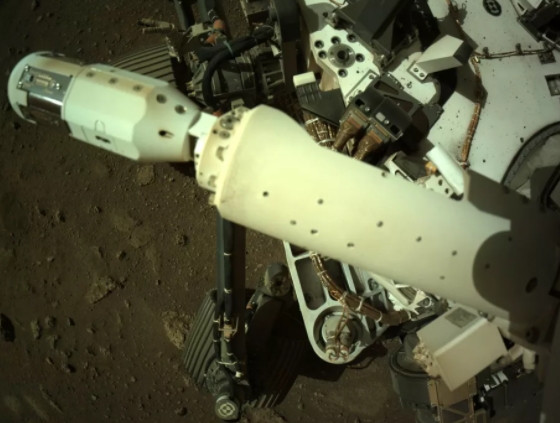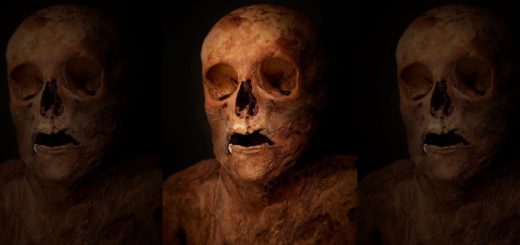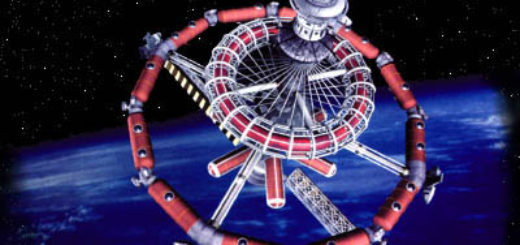Space photos: The most amazing images this week!

NASA’s latest Mars rover deploys its wind sensor, spectators in England watch a fireball light up the night sky and the Hubble Space Telescope views the ”black eye” galaxy. NASA’s latest Mars rover deploys its wind sensor, spectators in England watch a fireball light up the night sky and the Hubble Space Telescope views the ”black eye” galaxy.
Mars wind sensor The Perseverance rover’s wind sensor has been deployed, as this shot by one of the robot’s navigation cameras shows.
)The white segment seen at the top left of this image is the wind sensor aboard NASA’s Mars Perseverance rover. A camera on the six-wheeled rover photographed the incredible instrument once it was deployed. The wind sensor is part of Perseverance’s weather station, which is called the Mars Environmental Dynamics Analyzer (MEDA). The instrument will monitor air temperature, humidity, radiation, dust and wind on the Red Planet.
Fireball over EnglandThe fireball that streaked over southern England on Feb. 28, 2021, as seen by Ben L., who provided it to the American Meteor Society.
( Ben L. via fireball.amsmeteors.org)The bright flash of light seen at the upper left-hand corner of this image is a fireball produced by a meteor flying over southern England on Feb. 28, 2021. Observers as far away as Ireland and the Netherlands could also view the space rock’s brightness. This view comes from Ben L., who provided this image to the American Meteor Society.
International Gemini Observatory/NOIRLab/NSF/AURA/A. Smith)Strange atmospheric phenomena can be seen on the right side of this image, photographed by the “cloud cam” at the Gemini North telescope on Maunakea in Hawaii. The red sprite and the blue jet seen here occurred in Earth’s upper atmosphere and were caused by electrical discharges. Sprites and jets are rarely witnessed from the ground, but they’re not uncommon above thunderstorms. The Gemini North telescope sits high above sea level at 13,800 feet (4,200 meters), offering a fantastic view of the phenomena.
Full story: Rare red sprite and blue jet create otherworldly light show above Hawaii
Swirls may have ‘layer cake’ explanationSwirling hills in northern Russia have scientists perplexed.
(Image credit: NASA Earth Observatory/ Landsat 8)Scientists remain puzzled as to what is creating the land features that are visible in this satellite view of northern Russia. This annotated version of a NASA Landsat 8 satellite image shows the Markha River in Arctic Siberia and the rippled topography next to it. One possible explanation could be the thawing of permafrost, and another potential culprit for the swirls could be erosion that creates layer cake geology.
Massive iceberg breaks off from AntarcticaThis giant iceberg broke off from Antarctica’s Brunt Ice Shelf on Feb. 26, 2021.
(Image credit: contains modified Copernicus Sentinel data (2021), processed by ESA, CC BY-SA 3.0 IGO)A giant iceberg about 490 square miles (1,270 square kilometers) in size can be seen breaking off from Antarctica’s Brunt Ice Shelf in new satellite imagery. The animation is composed of images from European Space Agency’s (ESA) Copernicus Sentinel-1 mission, an Earth-observing project made up of two orbiting satellites: Sentinel-1A and Sentinel-1B.
This iceberg, called A-74, broke from Antarctica on Feb. 26, 2021. It severed from the ice shelf months after a large crack formed in November 2020.
Full story: Watch this giant iceberg break off from Antarctica
A comet and JupiterThis image, captured by the Hubble Space Telescope, shows the comet P/2019 LD2 as it swoops closely to the Trojans, the ancient asteroids trapped near Jupiter by the planet’s gravitational pull. This is the first comet that astronomers have observed near these ancient asteroids and the image reveals the comet’s dust and gas tail trailing away from its glowing center (or nucleus). The comet was discovered in June 2019 and is likely among the comets journeying towards the Sun after escaping the Kuiper belt.
(Image credit: NASA, ESA, STScI, B. Bolin (IPAC/Caltech); CC BY 4.0 )This image, captured by the Hubble Space Telescope, shows the comet P/2019 LD2 as it swoops closely to the Trojans, the ancient asteroids trapped near Jupiter by the planet’s gravitational pull. This is the first comet that astronomers have observed near these ancient asteroids and the image reveals the comet’s dust and gas tail trailing away from its glowing center (or nucleus). The comet was discovered in June 2019 and is likely among the comets journeying towards the Sun after escaping the Kuiper belt. — Chelsea Gohd
Planet-hunting with PlatoThe European Space Agency’s exoplanet-hunting spacecraft Plato has crossed another hurdle, with critical technology for its mission passing tests at the ESTEC Test Center in the Netherlands. The spacecraft will one day study and observe the cosmos from over 900,000 miles (1.5 million kilometers) away from Earth.
(Image credit: ESA-Matteo Apolloni)The European Space Agency’s exoplanet-hunting spacecraft Plato has crossed another hurdle, with critical technology for its mission passing tests at the ESTEC Test Center in the Netherlands. The spacecraft will one day study and observe the cosmos from over 900,000 miles (1.5 million kilometers) away from Earth. — Chelsea Gohd
A “black eye” galaxyThe Hubble Space Telescope snapped this image of the spiral galaxy NGC 4826, which can be found 17 million light-years away from Earth. The galaxy, which lies in the constellation of Coma Berenices (Berenice’s Hair), is often called the “black eye” galaxy because of the dark band of dust and gas sweeping across it, which you can see in this image.
(Image credit: ESA/Hubble & NASA, J. Lee and the PHANGS-HST Team; Acknowledgment: Judy Schmidt)The Hubble Space Telescope snapped this image of the spiral galaxy NGC 4826, which can be found 17 million light-years away from Earth. The galaxy, which lies in the constellation of Coma Berenices (Berenice’s Hair), is often called the “black eye” galaxy because of the dark band of dust and gas sweeping across it, which you can see in this image. — Chelsea Gohd
Honoring with a nameRecently, NASA named its headquarters building in honor of Mary W. Jackson, the agency’s first African American female engineer. Here, Artist Tenbeete Solomon (AKA Trap Bob) (on the right) presents her artwork honoring Jackson to Wanda Jackson, Mary W. Jackson’s granddaughter during the naming ceremony. Jackson, a mathematician and aerospace engineer, lead programs promoting the hiring and promotion of women in STEM [science, technology, engineering and mathematics] fields at NASA.
(Image credit: NASA/Joel Kowsky)Recently, NASA named its headquarters building in honor of Mary W. Jackson, the agency’s first African American female engineer. Here, Artist Tenbeete Solomon (AKA Trap Bob) (on the right) presents her artwork honoring Jackson to Wanda Jackson, Mary W. Jackson’s granddaughter during the naming ceremony. Jackson, a mathematician and aerospace engineer, led programs promoting the hiring and promotion of women in STEM [science, technology, engineering and mathematics] fields at NASA. — Chelsea Gohd
Capturing Mars from spaceThis image from space, captured by the ESA-Roscosmos Trace Gas Orbiter, shows NASA’s Perseverance rover, its back shell, heat shield and descent stage in Jezero Crater on the surface of the Red Planet. Perseverance landed in this ancient lake bed (a site that includes an ancient river delta) successfully on Feb. 18. The Trace Gas Orbiter watching from space captured this moment using its CaSSIS camera a few days after landing on Feb. 23.
(Image credit: ESA/Roscosmos/CaSSIS; Acknowledgement: P. Grindrod)This image from space, captured by the ESA-Roscosmos Trace Gas Orbiter, shows NASA’s Perseverance rover, its back shell, heat shield and descent stage in Jezero Crater on the surface of the Red Planet. Perseverance landed in this ancient lake bed (a site that includes an ancient river delta) successfully on Feb. 18. The Trace Gas Orbiter watching from space captured this moment using its CaSSIS camera a few days after landing on Feb. 23. — Chelsea Gohd



 Creators of mankind
Creators of mankind Description of “Tall white aliens”
Description of “Tall white aliens” Where they came from?
Where they came from? About hostile civilizations
About hostile civilizations The war for the Earth
The war for the Earth “Tall white aliens” about eternal life
“Tall white aliens” about eternal life Video: “Nordic aliens”
Video: “Nordic aliens” Aliens
Aliens Alien encounters
Alien encounters The aliens base
The aliens base UFO
UFO Technology UFO
Technology UFO Underground civilization
Underground civilization Ancient alien artifacts
Ancient alien artifacts Military and UFO
Military and UFO Mysteries and hypotheses
Mysteries and hypotheses Scientific facts
Scientific facts


















